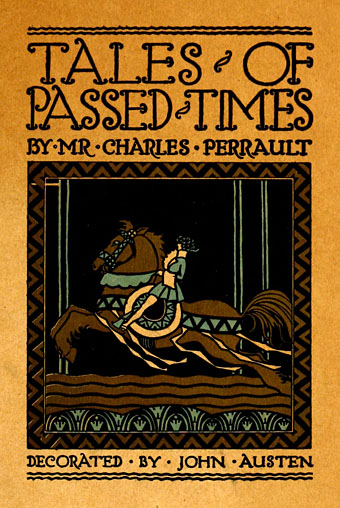
The retellings of old folk tales by Charles Perrault (1628–1703) became the earliest examples of what we now call fairy tales, but Perrault’s versions of Little Red Riding Hood, Puss in Boots, Sleeping Beauty, Cinderella et al have tended to be overshadowed by the more copious works of the Brothers Grimm and their followers. Perrault has attracted illustrators, however, including major figures such as Gustave Doré and Harry Clarke. This edition by John Austen is one of the artist’s earliest books dating from 1922. Perrault collections are often short; this one is only 74 pages but Austen fills the book with many small illustrations and vignettes. It’s a surprise seeing his work in colour when the more familiar drawings are all striking black-and-white. Spot colours help highlight Little Red Riding Hood’s outfit and Bluebeard’s beard. See the rest of the book here or download it here. (Thanks again to Nick for the tip!)
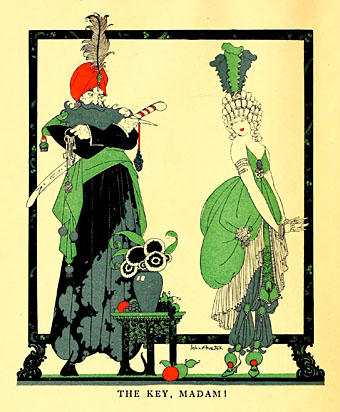
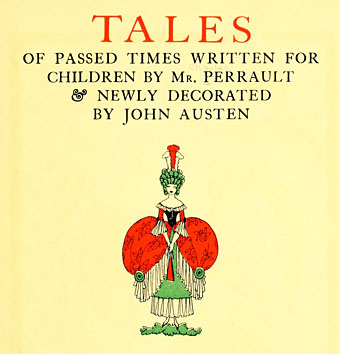
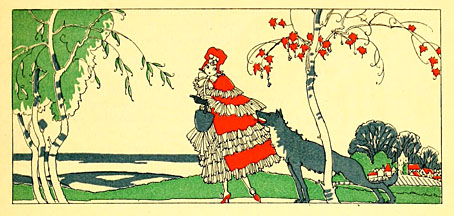
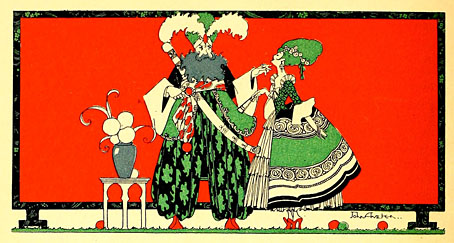
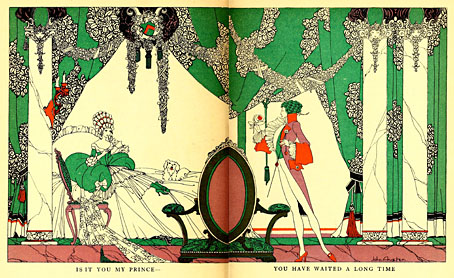
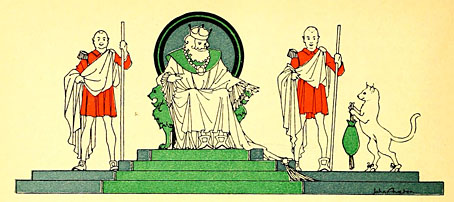
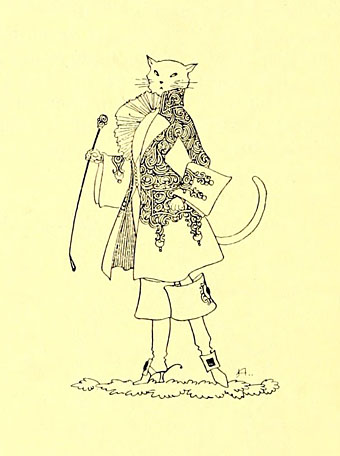
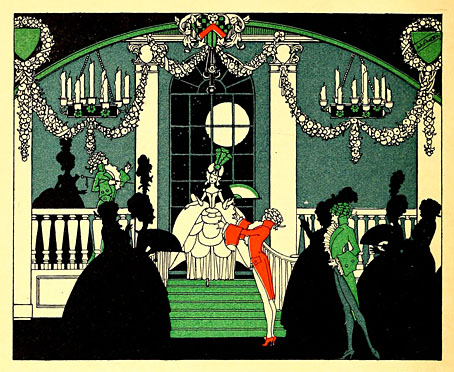
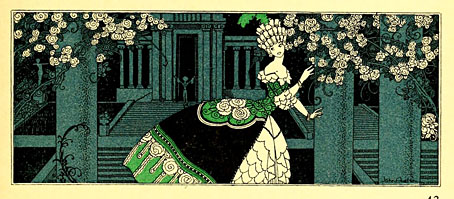
Elsewhere on { feuilleton }
• The illustrators archive
Previously on { feuilleton }
• John Austen’s Little Ape
• John Austen’s Hamlet
• The art of John Austen, 1886–1948

I have a rather nice hard cover edition of Perrault’s Fairy Tales published by Kestrel (Penguin) in the 1960s. It has illustrations by Heath Robinson.
Hi Anne. I was going to be posting some more so stay tuned! Can’t remember if I’ve seen that one before so it’s one to search for.
There’s a first edition going on eBay at the moment. Starting price was 99p, but it’s now considerably higher, with 12 hours still to go. The fact that it has its original dust jacket has probably bumped up the interest. The seller has put some nice images up.
http://www.ebay.co.uk/itm/371247028912?_trksid=p2050601.m570.l4455&_trkparms=gh1g%3DI371247028912.N7.S1.M749.R4.TR11
forgot to put the link in
Those are wonderful, and I’m always glad go see more of Austen’s more Beardsleyesque work. I’ve been on the lookout for books he’s illustrated, and most of what I’m coming across seems to be from his later period, which I don’t find nearly as interesting.